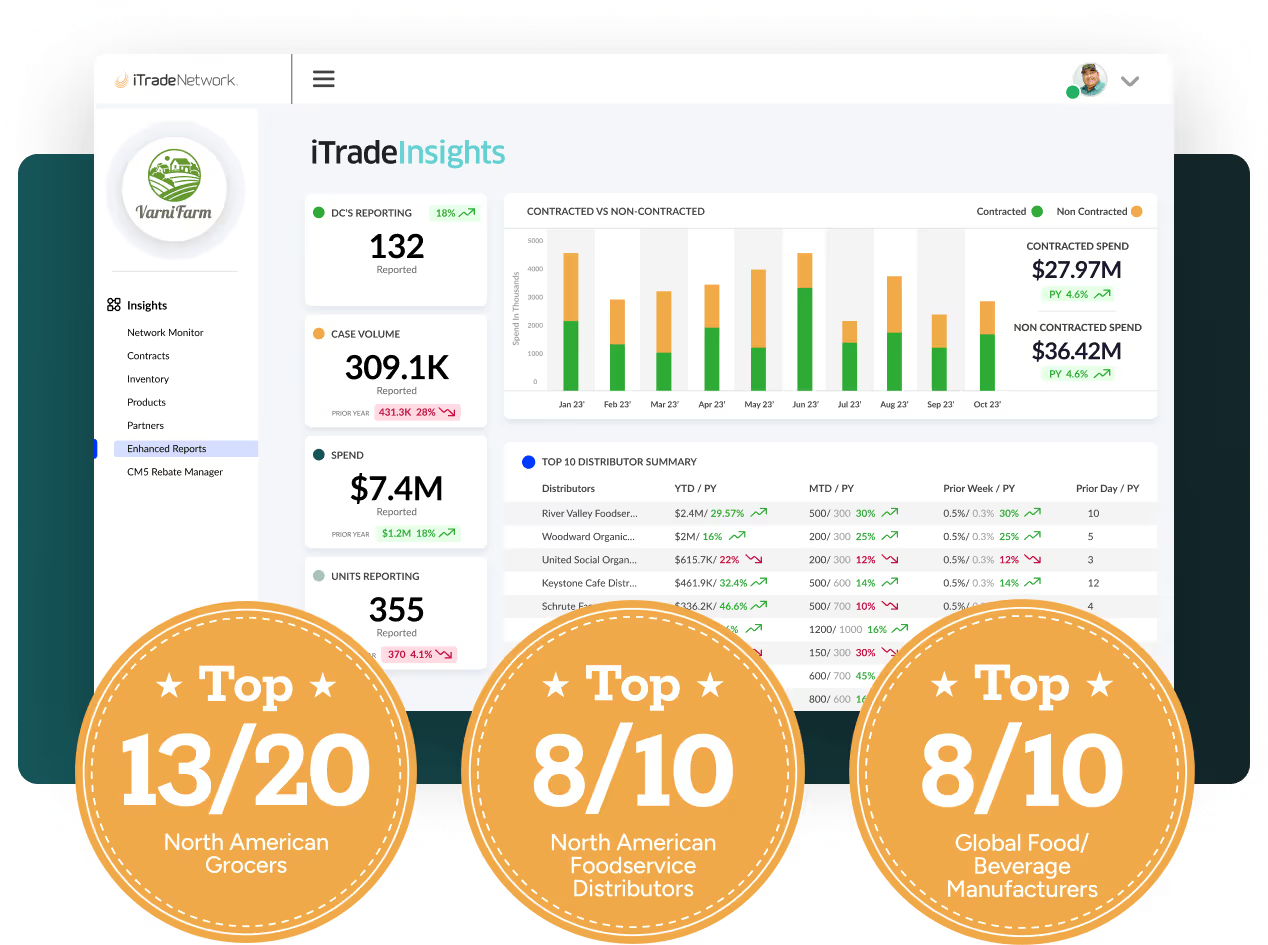Understanding the 867 Bill Back in the Food Service Industry

In the complex landscape of the food service industry, managing financial transactions and logistics can be quite challenging, especially when dealing with large volumes of data and various stakeholder relationships. One such challenge involves the concept of the 867 bill back. This blog post will explore what 867 bill back is, its uses, the challenges it presents to food service companies, and the best practices for overcoming these challenges.
What is 867 Bill Back?
The term "867 bill back" seems to be a blend of concepts that include the EDI (Electronic Data Interchange) 867 transaction and the financial mechanism known as bill back. EDI 867 is a standard electronic document used in the retail and manufacturing sectors that details product transfer and resale data, such as quantities sold, prices, and product descriptions. In the context of food service, the document plays a crucial role in communicating accurate sales information between suppliers, distributors, and retailers.
Bill back, on the other hand, refers to a financial arrangement where a seller extends a discount or rebate to a buyer after the completion of a sale, based on specific criteria being met, such as sales volume or promotional participation. When combined in the phrase "867 bill back," it suggests a scenario where sales data from an EDI 867 is used to facilitate or justify these financial adjustments.
Uses of 867 Bill Back
The 867 bill back is primarily used in the food service industry to streamline the reconciliation of financial accounts between parties, ensuring that rebates, discounts, and promotional fees are accurately applied based on the detailed sales information provided. This system helps maintain transparency and accuracy in transactions, which are critical for building and maintaining trust among business partners. It also supports regulatory compliance and financial reporting, making it an essential practice for any food service company involved in extensive distribution networks.
Challenges Produced by 867 Bill Back
Managing 867 bill backs in the food service industry involves navigating a range of complex challenges. The substantial volume and complexity of data involved in these transactions can significantly challenge data management and integrity. Errors in data capture, processing, or interpretation can lead to incorrect bill backs, resulting in financial discrepancies. Moreover, integrating EDI systems with existing ERP (Enterprise Resource Planning) and other accounting systems poses technical challenges. Effective integration is crucial for automating and streamlining the bill back processes.
In addition to system integration, regulatory compliance is a major consideration, as the food service industry is heavily regulated. Companies must ensure their billing practices comply with relevant laws and regulations, which can vary widely by region and over time. Furthermore, relationship management is critical; mismanaged bill backs can strain relationships with key partners, so accurate and timely handling of these transactions is essential for maintaining good business relations.
Best Practices for Managing 867 Bill Back
Managing 867 bill back documents extends beyond simple Electronic Data Interchange (EDI) handling. It's crucial for enhancing transparency, uncovering major discrepancies, and ensuring clear communication between distributors and operators. To navigate these challenges effectively, food service companies should integrate several key practices into their operations.
Regular audits and checks should be part of the routine to ensure data integrity and to catch errors early. Using state-of-the-art integration platforms that seamlessly connect EDI systems with internal ERP software is another best practice. This integration allows for real-time data processing and reduces the risk of errors associated with manual data entry.
Additionally, companies should stay updated with the latest regulations affecting the industry. Implementing compliance management systems that can automatically adjust to new regulatory requirements ensures that financial transactions remain compliant. Maintaining open lines of communication with all partners involved in the bill back process is also beneficial. Regular meetings, transparent reporting, and collaborative problem-solving can help prevent misunderstandings and build stronger relationships.
Finally, providing regular training for staff on the latest technologies and industry practices related to bill back management is essential. Support from knowledgeable IT and financial teams can help resolve issues more quickly and efficiently. By embracing these practices, food service companies can better manage the complexities of 867 bill backs, leading to improved operational efficiency, compliance, and partner relations.
By understanding the intricacies of 867 bill back and implementing these best practices, food service companies can enhance their operational efficiency, maintain compliance, and foster healthier business relationships. This, in turn, will lead to improved profitability and a stronger competitive position in the market.
Speak to an Expert
Take a closer look at the platform built for buyers and their trading partners

Understanding the 867 Bill Back in the Food Service Industry
In the complex landscape of the food service industry, managing financial transactions and logistics can be quite challenging, especially when dealing with large volumes of data and various stakeholder relationships. One such challenge involves the concept of the 867 bill back. This blog post will explore what 867 bill back is, its uses, the challenges it presents to food service companies, and the best practices for overcoming these challenges.
What is 867 Bill Back?
The term "867 bill back" seems to be a blend of concepts that include the EDI (Electronic Data Interchange) 867 transaction and the financial mechanism known as bill back. EDI 867 is a standard electronic document used in the retail and manufacturing sectors that details product transfer and resale data, such as quantities sold, prices, and product descriptions. In the context of food service, the document plays a crucial role in communicating accurate sales information between suppliers, distributors, and retailers.
Bill back, on the other hand, refers to a financial arrangement where a seller extends a discount or rebate to a buyer after the completion of a sale, based on specific criteria being met, such as sales volume or promotional participation. When combined in the phrase "867 bill back," it suggests a scenario where sales data from an EDI 867 is used to facilitate or justify these financial adjustments.
Uses of 867 Bill Back
The 867 bill back is primarily used in the food service industry to streamline the reconciliation of financial accounts between parties, ensuring that rebates, discounts, and promotional fees are accurately applied based on the detailed sales information provided. This system helps maintain transparency and accuracy in transactions, which are critical for building and maintaining trust among business partners. It also supports regulatory compliance and financial reporting, making it an essential practice for any food service company involved in extensive distribution networks.
Challenges Produced by 867 Bill Back
Managing 867 bill backs in the food service industry involves navigating a range of complex challenges. The substantial volume and complexity of data involved in these transactions can significantly challenge data management and integrity. Errors in data capture, processing, or interpretation can lead to incorrect bill backs, resulting in financial discrepancies. Moreover, integrating EDI systems with existing ERP (Enterprise Resource Planning) and other accounting systems poses technical challenges. Effective integration is crucial for automating and streamlining the bill back processes.
In addition to system integration, regulatory compliance is a major consideration, as the food service industry is heavily regulated. Companies must ensure their billing practices comply with relevant laws and regulations, which can vary widely by region and over time. Furthermore, relationship management is critical; mismanaged bill backs can strain relationships with key partners, so accurate and timely handling of these transactions is essential for maintaining good business relations.
Best Practices for Managing 867 Bill Back
Managing 867 bill back documents extends beyond simple Electronic Data Interchange (EDI) handling. It's crucial for enhancing transparency, uncovering major discrepancies, and ensuring clear communication between distributors and operators. To navigate these challenges effectively, food service companies should integrate several key practices into their operations.
Regular audits and checks should be part of the routine to ensure data integrity and to catch errors early. Using state-of-the-art integration platforms that seamlessly connect EDI systems with internal ERP software is another best practice. This integration allows for real-time data processing and reduces the risk of errors associated with manual data entry.
Additionally, companies should stay updated with the latest regulations affecting the industry. Implementing compliance management systems that can automatically adjust to new regulatory requirements ensures that financial transactions remain compliant. Maintaining open lines of communication with all partners involved in the bill back process is also beneficial. Regular meetings, transparent reporting, and collaborative problem-solving can help prevent misunderstandings and build stronger relationships.
Finally, providing regular training for staff on the latest technologies and industry practices related to bill back management is essential. Support from knowledgeable IT and financial teams can help resolve issues more quickly and efficiently. By embracing these practices, food service companies can better manage the complexities of 867 bill backs, leading to improved operational efficiency, compliance, and partner relations.
By understanding the intricacies of 867 bill back and implementing these best practices, food service companies can enhance their operational efficiency, maintain compliance, and foster healthier business relationships. This, in turn, will lead to improved profitability and a stronger competitive position in the market.
Unlock It Now!




